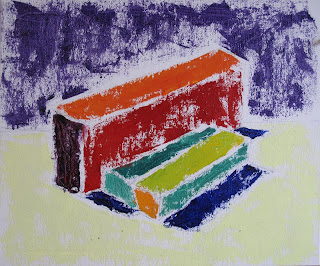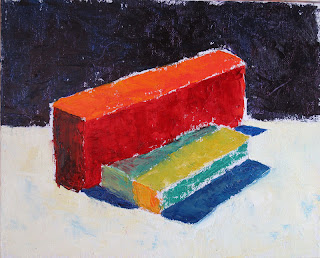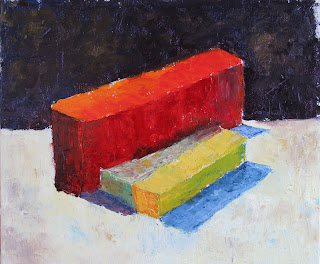Steps are:
1) Establish the masses;
2) Refine the masses;
3) Establish variation in the masses;
4) Add more variation in the masses.
The following three shots show my first attempt at trying the block exercises.
 In this shot the masses are established and warm colours are used to show lit areas whilst cool colours are used for shadow areas.
In this shot the masses are established and warm colours are used to show lit areas whilst cool colours are used for shadow areas.
Here the masses are beginning to be refined and the appropriate colour notes applied.
 In the last shot I have established variation in the masses and at this point I've decided to give some thought to what further refinement might be required.
In the last shot I have established variation in the masses and at this point I've decided to give some thought to what further refinement might be required.This exercise has given me a great deal of pleasure from a number of points of view. First of all it is my initial attempt at completing a whole piece with a painting knife as opposed to brushes. whilst awkward to use, as the work has gone on I have begun to feel a little more comfortable with these tools. Secondly, I have experienced a degree of freedom throughout the making of this picture that is different to the tightening up that often occurs when using brushes. The knife will certainly play a part in my armoury from now on. Lastly, the use of pure colour, as opposed to lots of mixing, imbues the work with a greater feeling of light. This is a lesson that I hope not to forget.
2 comments:
Thanks Mick. Another informative post with great images. I use big paint scrapers on big paintings and love painting like this.
Michelle - I'm looking forward to using the knife on something a little larger. I think I'll need something bigger to apply the paint and also a new supply of paint. The technique certainly eats through a tube at a fair old rate. Thanks for the comment.
Post a Comment